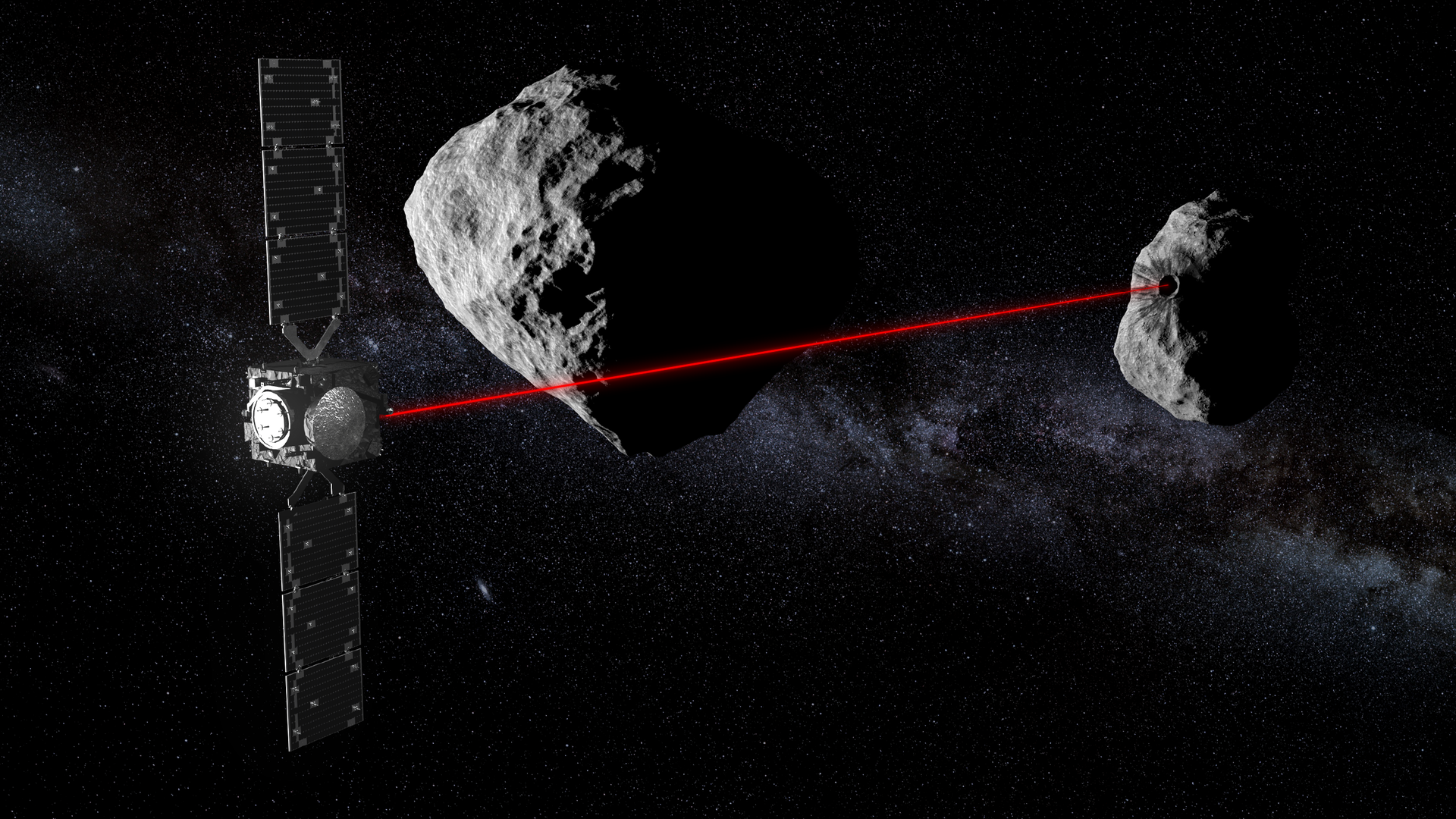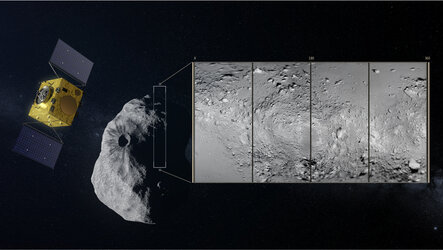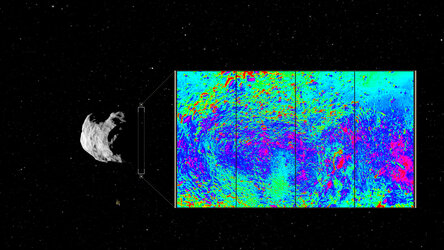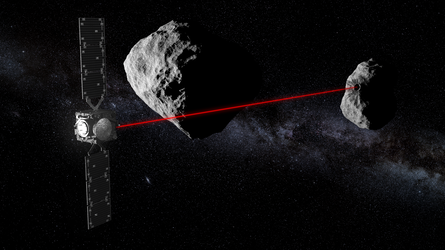Optel-D
The Optel-D optical downlink system will be an In-Orbit-Demonstration of the capability to transmit data over large distances. The copious amounts of data gathered from Didymoon’s surface and subsurface mapping will be returned via laser beam to ESA’s optical ground station in Tenerife, thereby accomplishing high-bandwidth optical communications from deep space.
The optical communication system will for the first time demonstrate deep-space communication between the main spacecraft and Earth.
As an altimeter the optical laser terminal will have a vertical and horizontal surface resolution of 1 m or better to accurately position the AIM spacecraft around Didymoon. This will allow a more precise release of the MASCOT-2 lander, so the risk of bouncing off the asteroid can be further reduced.

The optical system will also provide accurate measurements of the 3D shape of Didymoon, as well as of the asteroid’s surface topography with a precision of 20 cm. By measuring the wobble of Didymain before and after impact it will be possible to determine the amount of mass loss on Didymoon caused by the impact.
| Primary objectives | |
| Science | |
| P1 | To provide the accurate 3D shape of Didymoon with an accuracy of 50 cm or less, and a precision of 20 cm |
| P2 | To determine the mass of Didymoon by measuring the wobble of Didymain with an accuracy of less than 1 m |
| P3 | To determine Didymoon's surface topography and measure fine-scale features with a precision of 20 cm and a sampling area (footprint) of no more than 30 cm in diameter and the distance between footprints no more than 30 cm |
| Technology | |
| P4 | To demonstrate the downlink of one measurement set (480 images taken at equal time intervals during 1 Didymos period or 10 Gbits/12h) within a month (goal: 2 weeks) at distances of 0.5 AU (for distances between 0.5 and 3.3 AU a lower downlink would be acceptable) |
| P5 | To demonstrate the use of spacecraft range and range rate measurements at distances of up to 0.5 AU (goal: up to 3.3 AU) |
| P6 | To demonstrate the use of the optical terminal for altimetry measurements with a vertical and horizontal surface resolution of 1 m or better |
| Secondary objectives | |
| S1 | To provide the accurate 3D shape of Didymoon after DART impact with the same accuracy and precision as before impact |
| S2 | To determine the mass of Didymoon after impact by measuring the wobble of Didymain with an accuracy of 1 m |
| S3 | To determine Didymain surface topography and measure fine-scale features |
| S4 | To support the study of surface chemical and mineralogical properties (a design of the Optel-D unit with spectroscopic capabilities will be given consideration during the assessment phase |








